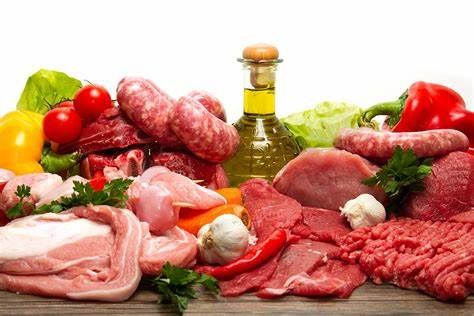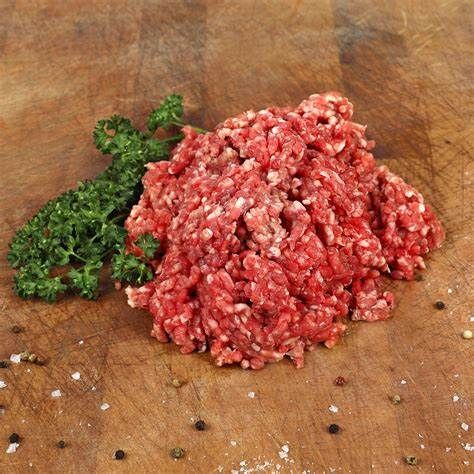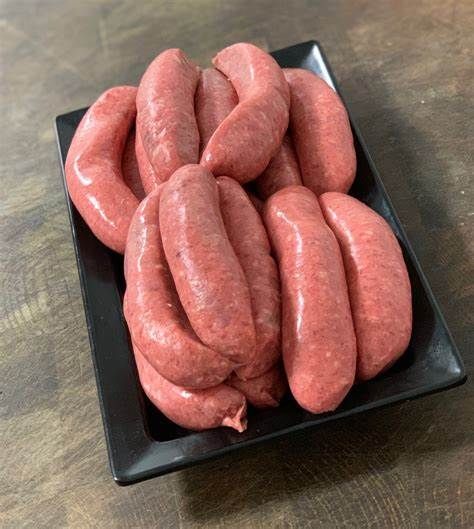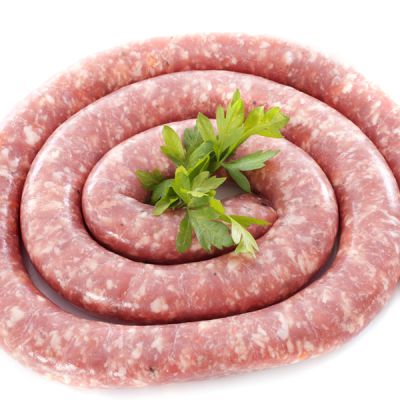Kel Foods
Beef Mince
Minced meat is meat that has been very finely chopped. It can also be ground in a meat grinder in some countries, but it only consists of the meat without any added ingredients. Machines with razor-sharp blades are used to cut the meat into minuscule fragments. As a result, its texture is coarser than that of ground meat. The meat has a much more natural and intense meaty flavor because it cannot be bulked up with fat or water.
ZK 25.00
/ 250 G
Beef Sausage
A beef sausage is a type of sausage made from finely minced meat, such as pork or beef, mixed with fat, cereal or bread, and seasonings. The mixture is then packed into a tube-shaped animal intestine or synthetic casing. The process of making sausages involves combining cuts of meat with the perfect combination of lean (70%) and fatty (30%) meats. This ensures that when the sausages are cooked, some but not all of the fat will be cooked out, leaving just enough to compliment the sausage without leaving it dry and crumbly. The meat used in sausages is typically combined with a binding agent to help maintain its consistency. A product called sausage starter, which contains rice flour, is commonly used as a binding agent. Natural sheep casings are often used as the casing for beef sausages. These casings are thin and translucent, allowing the meat to be the star of the show. They are also easy to bite through and provide a satisfying snap when you cut through the skin.
ZK 35.00
/ 1 PACK
Hungarian Sausage
Hungarian sausages are a staple in Hungarian cuisine and come in various types, flavors, and preparations. They can be boiled, fresh or dried, and smoked, with different spices and flavors. Some of the popular Hungarian sausages include: 1. Gyulai sausage: Named after the Hungarian town of Gyula, it is slow-cooked and beech wood-smoked. It is made from pork, Hungarian bacon fat ('szalonna'), garlic, pepper, caraway, and Hungarian red paprika. 2. Csabai sausage: Made in the town of Békéscsaba, it is similar to Gyulai sausage but somewhat spicier. It is known for its strong paprika flavor. 3. Csemege kolbász: A mildly spiced cooked smoked sausage. 4. Cserkész kolbász: A cooked smoked sausage made from beef and pork. 5. Debreceni kolbász: Usually unsmoked or more mildly smoked, it has a strong paprika flavor and is commonly used for cooking¹. 6. Lecsókolbász: A spicy cooked smoked sausage made specifically for serving as part of the dish lecsó, a vegetable stew with peppers and tomatoes¹. The ingredients used in Hungarian sausages can vary but typically include bacon, ground pork, beef, boar or lamb, paprika, salt, garlic, black pepper, allspice, white pepper, caraway, nutmeg, zest, marjoram, cayenne pepper, sugar, white wine or cognac. Additional ingredients like liver, mushroom, bread, rice, lemon juice, eggs, cream or milk may also be added. The preparation process involves coarsely grinding and salting the meat. If garlic is added to the sausage mixture, it is mashed in water to produce a slurry before being added to the meat along with spices. The sausage is then stuffed into natural casings in 1-foot links using the small intestine of the pig. Please note that these descriptions are based on traditional Hungarian sausages and may vary depending on regional preferences and recipes.
ZK 120.00
/ 1 KG
Boerewors
Boerewors is a type of sausage that originated in South Africa and is an important part of South African, Zimbabwean, Zambian, Botswanan, and Namibian cuisine. The name "boerewors" is derived from the Afrikaans words "boer" (a South African of Dutch or Huguenot descent) and "wors" (meaning "sausage"). Boerewors must contain at least 90% meat or fat from beef, pork, lamb, or goat. The remaining 10% consists of spices and other ingredients. The fat content in boerewors should not exceed 30%, and it should not contain offal or any mechanically recovered meat pulp. Traditional boerewors is made from coarsely minced beef (sometimes combined with minced pork, lamb, or both) and spices such as toasted coriander seed, black pepper, nutmeg, cloves, and allspice Note: Boerewors is most traditionally braaied (grilled over charcoal or wood), but it can also be cooked under an electric grill, roasted in an oven, or fried in a pan. When cooking boerewors, it's best to avoid pricking the casing to prevent the wors from drying out during preparation. Variations: There are many varieties of boerewors available. Some examples include garlic wors, kameeldoring (camel thorn), Karoowors (sausage from the Karoo region in South Africa), and spekwors (made with extra cubed pork fat). Other ingredients such as cheese and chili peppers can also be added to create different flavors.
ZK 35.00
/ 1 PACK
Brown Sugar Bakes
Cakes
Cakes are bakery products that are rich in sugar fat and eggs and can be accompanied with a wide variety of inclusions like fruits and flavours such as vanilla extracts. They represent a very important segment within the baking industry. - They come in many varieties and very versatile in terms of flavours, textures, shapes, and colours, perfect as snack or as a serving size portion on special occasions. - They are typically made from soft wheat characterized by low protein content and high purity. Cakes can generally be categorized into three types based on differences in formulation, processing conditions, and attributes of the finished product: 1. Batter type: rely on eggs, flour, and milk for structure and contain high amounts of fat and water which creates an aerated and chemically-leavened oil-in-water emulsion. Much of the volume of the finished product is created by baking powder. Batter types are classified into: - Pound cakes (which rely on eggs and fat for leavening, e.g., butter, pound, and snack cake) - Layer cakes (that rely more on chemical leaveners, e.g., white layer, yellow layer, and chocolate layer cake) 2. Foam type: rely mainly on the extension and denaturation of egg protein for the bulk of the final volume. They can be regarded as "cakes without shortening" given the absence of the oil-in-water emulsion characteristic of batter systems. Depending on the egg fraction used, foam-type cakes are divided into two classes: - Angel food cake (makes use of egg white proteins to trap air during mixing) - Sponge cake (makes use of either whole eggs or yolks or a combination of both) 3. Chiffon type: made with a combination of batter and foam to form a modified "foam-type" grain and texture.
ZK 500.00
/ 1 PCS
Cupcakes
A cupcake is a small cake designed to serve one person, which may be baked in a small thin paper or aluminum cup. As with larger cakes, frosting and other cake decorations such as fruit and candy may be applied. Cupcakes are small, tasty snack cakes that are favored for their portability and portion-control. They are batter cakes baked in a cup-shaped foil or temperature resistant paper. The term cupcake is defined as "a small cake baked in a cup-shaped foil or paper case".
ZK 250.00
/ 12 PCS








